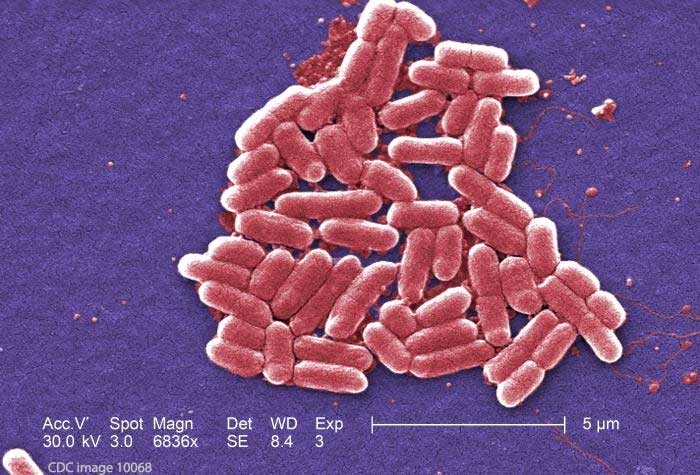With the multistate E. coli O157:H7 HUS outbreak linked to romaine lettuce sickening so many people in the U.S., many people are asking for details about this bacteria and what a STEC infection does to the human body. We asked an attorney to explain how E. coli bacteria damage the body and why people file lawsuits.

Most types of E. coli bacteria won’t hurt you. But some, especially the kinds that produce Shiga toxins, can cause serious illness and can even be deadly.
E. coli are rod-shaped, gram-negative bacteria. They are found everywhere: in food, in soil, and in the intestines of people and animals, especially ruminant animals such as cows and goats. The E. coli bacteria that cause illness are called Shiga toxin-producing E. coli, or STEC.
The most common STEC is E. coil O157:H7. There are other serogroups of E. coli that cause illness; these are called non-O157 STECs, and include E. coli O121, E. coli O145, and others. The CDC estimates that every year in the United States, STEC causes 265,000 illnesses, 3,600 hospitalizations and 30 deaths.
There are two kinds of Shiga toxins produced in a STEC infection: Stx1 and Stx2. In the current outbreak linked to romaine lettuce, Stx2, which causes more damage, has been produced by this bacteria. That explains why the HUS development and hospitalization rate is higher in this outbreak than the average outbreak.
The Shiga toxins that these bacteria produce cause damage to the body in several ways. First, the toxins cause hemorrhagic colitis, or shedding of the intestinal walls, that produces the bloody diarrhea typical of this infection. If the toxins then enter the blood stream they can get into the central nervous system and the kidneys. That’s when hemolytic uremic syndrome, or HUS, can develop.
In the kidneys, the Stx1 and 2 toxins bind to receptors on some of the cell membranes. The toxin moves to areas in the cells called Golgi apparatus and to the membrane of the cell nucleus. The toxin kills the cells, which can cause kidney failure. And the toxins can also destroy red blood cells in the bloodstream. When those cells go through the kidney’s filtration system, they clog little tubes and cause more damage.
About 30% of HUS patients suffer from central nervous system complications. Those complications can include cortical blindness, poor fine motor coordination, coma, and seizures.
While anyone of any age can get sick if they ingest this pathogenic bacteria, there are some groups that are more likely to develop hemolytic uremic syndrome. Children under the age of 10, more specifically 5, and adults over the age of 65 are more susceptible.
The symptoms of a STEC infection include painful and severe cramps in the abdomen and stomach along with bloody and watery diarrhea. If a fever is present, it is usually mild.
About 5 to 10% of these patients will develop hemolytic uremic syndrome. Symptoms of HUS include urinating less often, feeling very tired, and losing color in cheeks and inside the lower eyelids. Easy bruising and bleeding from the nose or mouth are other symptoms. These people need to be hospitalized. Some will develop kidney failure and need a transplant in the future. And some will die. In this outbreak, 15% of the patients have developed HUS, which is strikingly high.
There are ways to protect yourself against a STEC infection. The variables you can control include avoiding raw milk and raw milk products, unpasteurized juice, and raw, rare, and undercooked ground beef. Unfortunately, consumers can’t protect themselves agains outbreaks such as the one linked to romaine lettuce and other ready-to-eat foods until they are notified by public health officials. Consumers should try to stay aware about outbreaks and recalls and act accordingly.
In this outbreak, lawsuits have been filed against four restaurants. They include Panera, Red Lobster, Texas Road House, and Papa Murphy’s.




